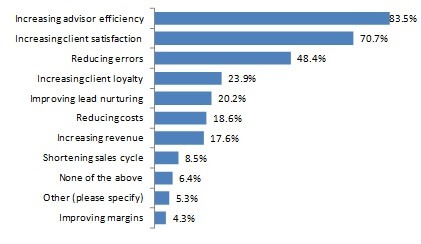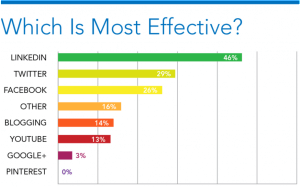Statistics Every Calgary Marketing Firm Needs to Know
July 15, 2015
The landscape of marketing seems to change with which way the wind blows and keeping up with it is a full time job. To draw in the marketing Calgary seems to react to, you need to spend some time working out what works. Analytics are the basis of any successful marketing media campaign as it shows you where your customers are. If you listen to your analytics they can guide you to success, but you do need to know which ones that speak the loudest.
As soon as I mention the word ‘analytics’ I can see you all shudder and grimace like I’ve forced a spoon of cod liver oil down your neck with your eyes, and ears, glazing over willing yourself to not to instantly go into a coma like it did in high school math.
Interpreting statistics doesn’t have to be hard.
Much of the research you need to use has already been conducted. You can of course, construct your own research, but the cost is extremely high and the results may turn out to be something you already knew, or worse, something that you could have found out with a Google search as it has already been done and is freely available online, or you already have in your armoury but you just don’t realise it.
The statistics every Calgary marketing firm needs to know are basic and can be broken down into four groups:
- What is working
- What isn’t working
- What is popular
- Where you audience is
Sadly, the statistics don’t come already sorted into these categories, but with a little thought and irreverent poking around, you can find out exactly what marketing Calgary reacts to.
Statistics to find out what is working
Social Media Examiner reported:
‘Marketers need to start by
defining goals and goal values in their analytics. That changes the application from “what happened” to “how it’s impacting your business.”
For example, choose a goal, like newsletter signups. Then determine what dollar value you put on a newsletter subscriber (what a subscriber spends on your website). Once you do that, you’ll start to see things like estimated revenue of traffic. This is the value of traffic coming from social media and search to your site.’
And they’re totally right.
In this day and age nearly all programs, apps and data come with their own analytics. You don’t have to go far to find out if it’s working for you. These analytics give you the edge and the social media platforms know they are so valuable, they keep on refining them. By making it a priority to know the analytics intimately, and them keep up on them and how to apply them.
Start with your most popular marketing methods and see what they offer.
CRM

Not using a CRM? Look at the analytics of the platforms you do have and see if it can help you. Identify your weaknesses and use this chart to consider if a CRM will improve you ROI (return on investment)
If you have a CRM or Customer Resource Management system like
Salesforce, they have a section that will show you the habits of your company, and if you use it, the habits of your buyers. You can see how often you are contacting people, track sales, prospects, user statistics – just about everything you need to know. Use these first before you go anywhere else.
What you chose to use depends on your CRM and what your company’s goals are.
If you want to see how useful a CRM system is to you, learn more
here.
SOCIAL MEDIA

According to research:
Surprised?
Every Calgary marketing firm needs to be using social media. Period. It’s the future of successful online marketing. But just throwing up posts will not do. Social media is one arena that can only be used effectively when you use your analytics as a guide.
FACEBOOK

It didn’t take long for Facebook to realize what potential their platform had in a marketing sense, so they made it easy to use by tracking all the information you’d need on their ‘insights’ page. It shows everything that gives you a great set of goal posts to guide your marketing.
You can see how many likes you’re getting but more importantly from where, which is your most influential post (so you can replicate it), how many unlikes you are getting, information right down to being able to load up your competition’s Facebook pages and se how they are doing.
There’s a great tutorial
here.
Facebook is so convinced that they can help you increase your sales that it offers paid advertising. If you choose to take up these options make sure you analyze your data first or you can waste a lot of time and money. From the graph above you can see the kind of click through rate you might be looking at, so it’s worth making sure it will work for you.
TWITTER

If you use Twitter then log into your Twitter analytics dashboard. It’ll take you through tweet activity, what it means, followers and most importantly Twitter cards. It also allows you to set up an advertising account and shows you why you need one.
For more information look
here.
There are other platforms that you can name right off the top of your head that you can use to track how effective you are with your
online marketing, but what about the ones you can’t name so quickly or you don’t consider as a popular social media platform?
LINKEDIN

Business2businesscommunity.com reported that:
‘70% of LinkedIn users are outside the US (
source): This was not true several years ago, when adoption rates outside the US were as low as 30%. The obvious significance of this statistic is that LinkedIn is now a valuable B2B sales and marketing resource for every company, regardless of geographic location. It also means that you should consider extending the reach of your LinkedIn content and campaigns to new territories – not just on your home turf (if you are US based).
The average user spends 17 minutes on LinkedIn per month (
source): This stat was taken back in 2012, so it’s quite possible that the actual number is much higher today (and I’d be shocked if it weren’t). Nevertheless, it’s obvious that LinkedIn still trails Facebook and other, more consumer-focused platforms when it comes to overall engagement. Thus, the key takeaway here is that if you hope to engage prospects on LinkedIn and nurture them to leads, your content needs to be eye-catching and extremely relevant. Time is of the essence.
LinkedIn generates 4X as many homepage views as Twitter and Facebook (
source): The important thing to note here is relevancy and context. It’s much harder to get the attention of a LinkedIn user versus Facebook or Twitter (see stat above) but it is much easier to get them interested in your brand.’
LinkedIn has an amazing ability for you to reach out to potential leads and drawing them in. There are many, many tactics to increase your audience so you need to explore it as a lead generation tool and do a fair amount of AB testing, but the ROI is impressive.
There’s a great tutorial
here.
If you take a look around you’ll see that you already have a wealth of statistics on what is already being worked, and some that you don’t realise can work better.
What isn’t working
The same metrics you use to work out what is working, are the same metrics to work out what isn’t.
Look for:
- Downward trends – these are great in some instances, but all downward trends need to be analysed even if they are small. Most problems are indicated in small fluctuations at first, and then plummet.
- Wild Variations – if you have a sustained campaign the analytics should also be sustained. If you have variations in metrics look for triggers. You need to learn from them.
- Competition Successes – Track your competition and see where they are succeeding and adjust your campaign to match.
The key with all metrics is to watch them like a hawk. Check them every day and see what happens. Making them work for you is a full time job of observation – there is no quick fix for this.
What is popular
If you are tracking the above metrics and using the information to guide your campaigns then you will know what is popular and what is worth working to your advantage. The two are not the same.
A popular post is one that goes viral, but not all viral posts can be good for you company or more importantly, your company image. Replicating a popular post may not create the traction you envisage as it may be seen as ‘jumping on the bandwagon’, or the content and media may not be suitable for your image or chosen demographic. In all cases, you need to seriously think if this is the way you want to take your advertising.
Media worth working are the ones that expand your company image, reach out to your audience and increase your credibility in the marketplace. They may not always be the most popular but they will be the most successful in the long run.
Use your social media to see what your leads are talking about, or what they would like to see that is currently missing.
Where your audience is
If you look at your metrics and they are really disappointing it may be because you aren’t where your audience is. People with the same tastes and preferences will group together and this is where your metrics will indicate a strong hold. If you are failing, you are not attracting the right people. As soon as you start to succeed you know you’re where your audience is, take that information and leverage it.
Metrics are vital to being able to attract sales through Calgary marketing. If you are creating any type of campaign without founding it on your known analytics you risk falling behind your competition. Math may not have been your strong point at school, but analytics can make your marketing in Calgary your strength.
 Talk to a person
Talk to a person







